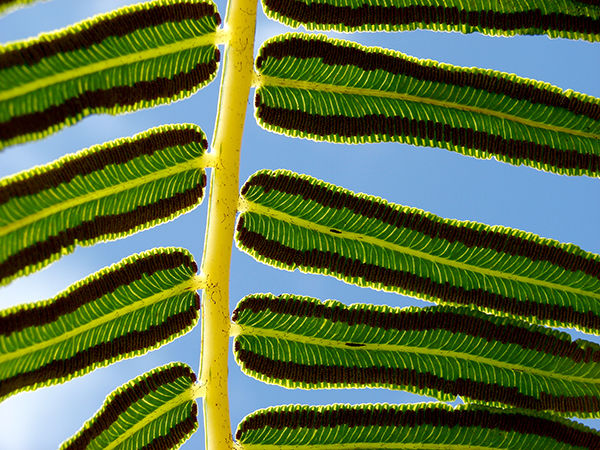LIHUE — The Kauai Invasive Species Committee confirmed that an unfamiliar plant growing along Kuhio Highway near Kalihiwai Bridge is an invasive mule’s foot fern. “We are currently in the process of moving forward on this plant, but we need
LIHUE — The Kauai Invasive Species Committee confirmed that an unfamiliar plant growing along Kuhio Highway near Kalihiwai Bridge is an invasive mule’s foot fern.
“We are currently in the process of moving forward on this plant, but we need to go through the proper channels for permission to eradicate this plant and also try to find some way to slow the traffic down (the side of the road is very narrow) before we can walk down into that area,” KISC Field Crew Supervisor Larry Kaneholani wrote in an email.
Mule’s foot, or Angiopteris evecta, is a fern native to Polynesia, Melanesia, Micronesia, Australia and New Guinea that has established invasive populations in Hawaii, Costa Rica and Jamaica, according to the Global Invasive Species Database. It is known to establish dense stands that displace and shade out native plants and reduce biodiversity in ecosystems.
Kilauea resident Tom Taylor told The Garden Island he saw the plant, which he said is growing approximately 200 yards east of the bridge on the edge of the northbound lane.
“You can’t miss it,” he said.
Kaneholani said the fern is growing in a few locations on Kauai, but that KISC is currently only treating at one site at the Halfway Bridge, south of Puhi.
At another site, located between Maluhia (Tree Tunnel) Road and the Kahili Mountain turnoff, one plant was found growing in a small ditch and was treated a few years ago. That plant never grew back, according to Kaneholani.
“The other two sites are growing on private property where it is the ‘center piece’ of their landscape,” he wrote. “I don’t know how widespread it is here on Kauai but it’s slowly turning up in more places, Kalihiwai being the fifth sighting.”
Kaneholani said they received several phone calls about the invasive fern at Kalihiwai Bridge near Kilauea before investigating.
Mule’s foot is cultivated worldwide as an ornamental fern and thought to be especially problematic on islands that house many endemics, according to GISD.


